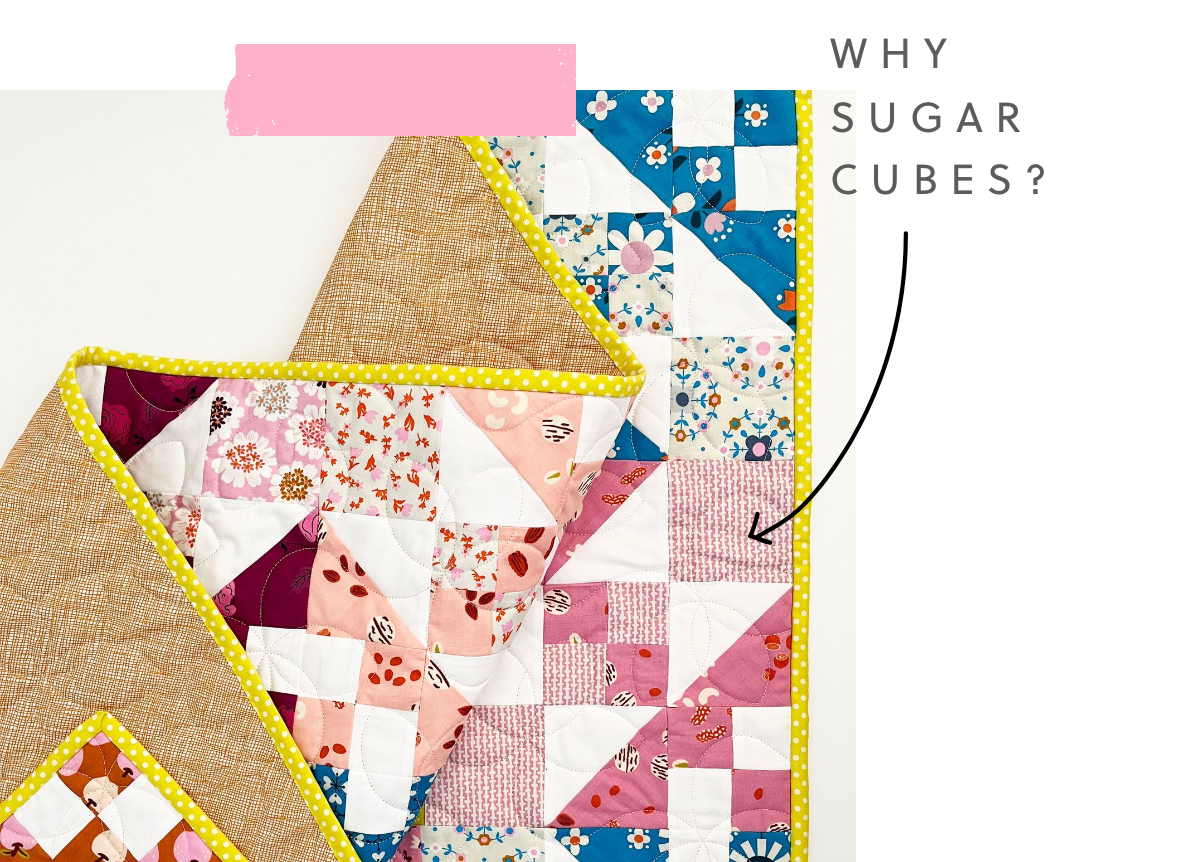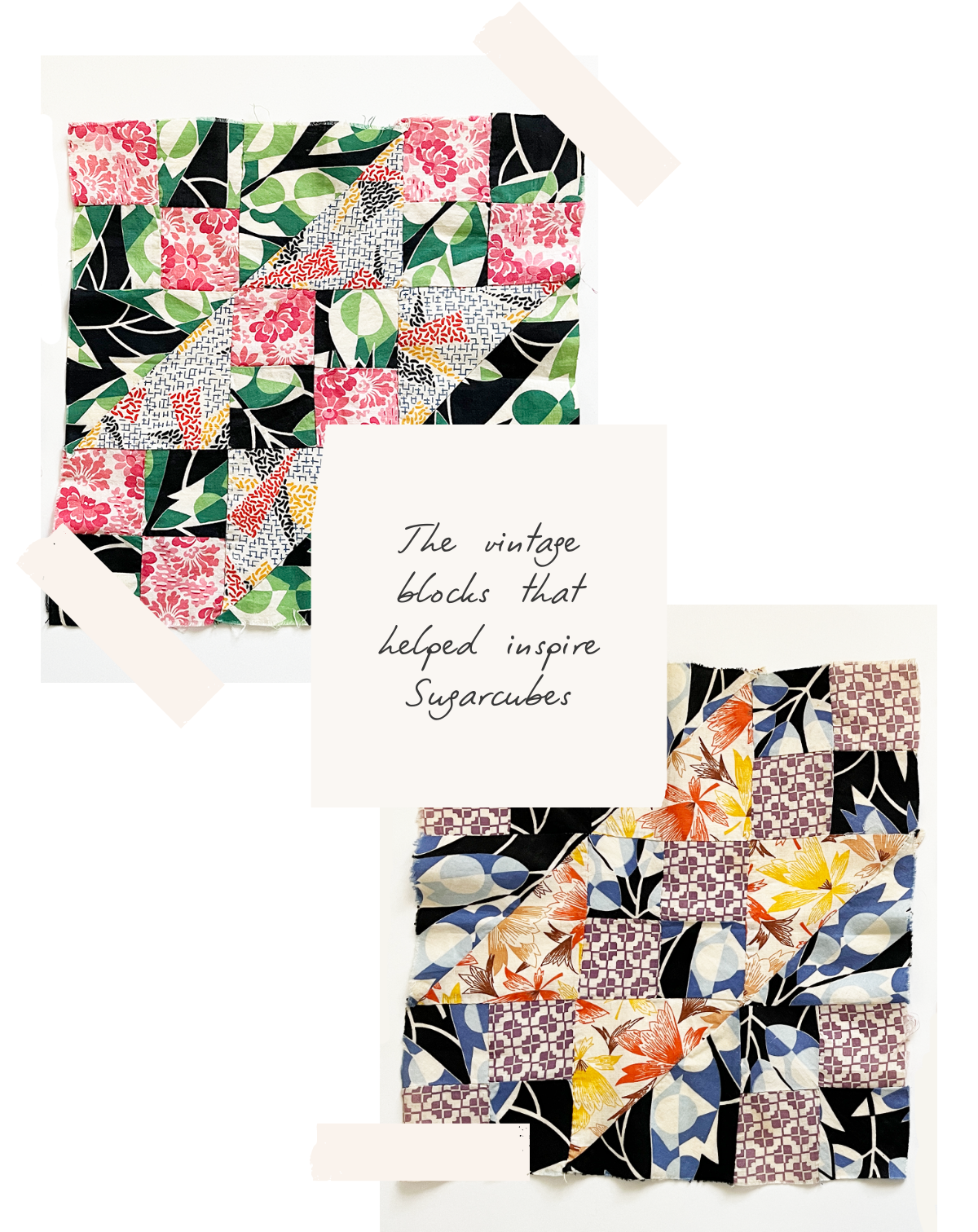The longer I quilt, the more I’ve come to value patterns that consist of a single block that you can combine to create endless looks, and the Sugarcubes pattern is exactly that. It recommends a really specific balance and placement of certain colour values (you need a light, a medium, and a dark) to achieve the look you see here … but really you can change this up to create almost infinite results.
The seeds
I have a few vintage blocks in my stash that I collected back when I first started quilting … back then I had no idea what I was doing or even that blocks could have names. I bought these solely because of the fabric and print mix. It felt somewhat rare at the time to see this use of black, and the mix of florals and geometrics (which is something I love to this day). These beauties are also hand stitched, which makes me treasure them even more. I also loved that they each have two diagonal through lines. But I tucked them away and didn’t think about them for a while.
Flash forward several years and now I’m designing patterns, and thinking about ways to riff on a classic, the Broken Sugar Bowl.
Broken Sugar Bowl is of course a reference to the Sugar Bowl block, and both of these are variations of Jacob’s Ladder blocks. The Jacob’s Ladder family also includes Road to Arkansas, Road to California, and Rocky Road to California, echoes of all of which you can see in Sugarcubes.
So Sugarcubes is very much an homage to, and an evolution of, the traditional blocks that came before it. But how did I give it that twist?
- Well, literally by adding many twists. If you look closely you can see that component parts have been moved around and rotated to create new shapes.
- Colour value: it’s all about colour placement and volume! Allocating light, medium, and dark fabric to specific parts of the block is what creates the essential look of Sugarcubes when all the blocks are placed together.
- Finally, a square motif (the “cubes” in “sugarcubes”) that repeats itself throughout. The aforementioned twists and substitutions are designed to max out on different sizes and combinations of squares.
While sometimes with Jacob’s Ladder style quilts the blocks are set in one direction, forming a diagonal pattern, in Sugarcubes you’ll set blocks together in groups of four, with alternating directions. This creates one more element of larger dark squares repeated across the entire quilt.
Do you have a favourite classic quilt block that inspires you? Let me know in the comments!



